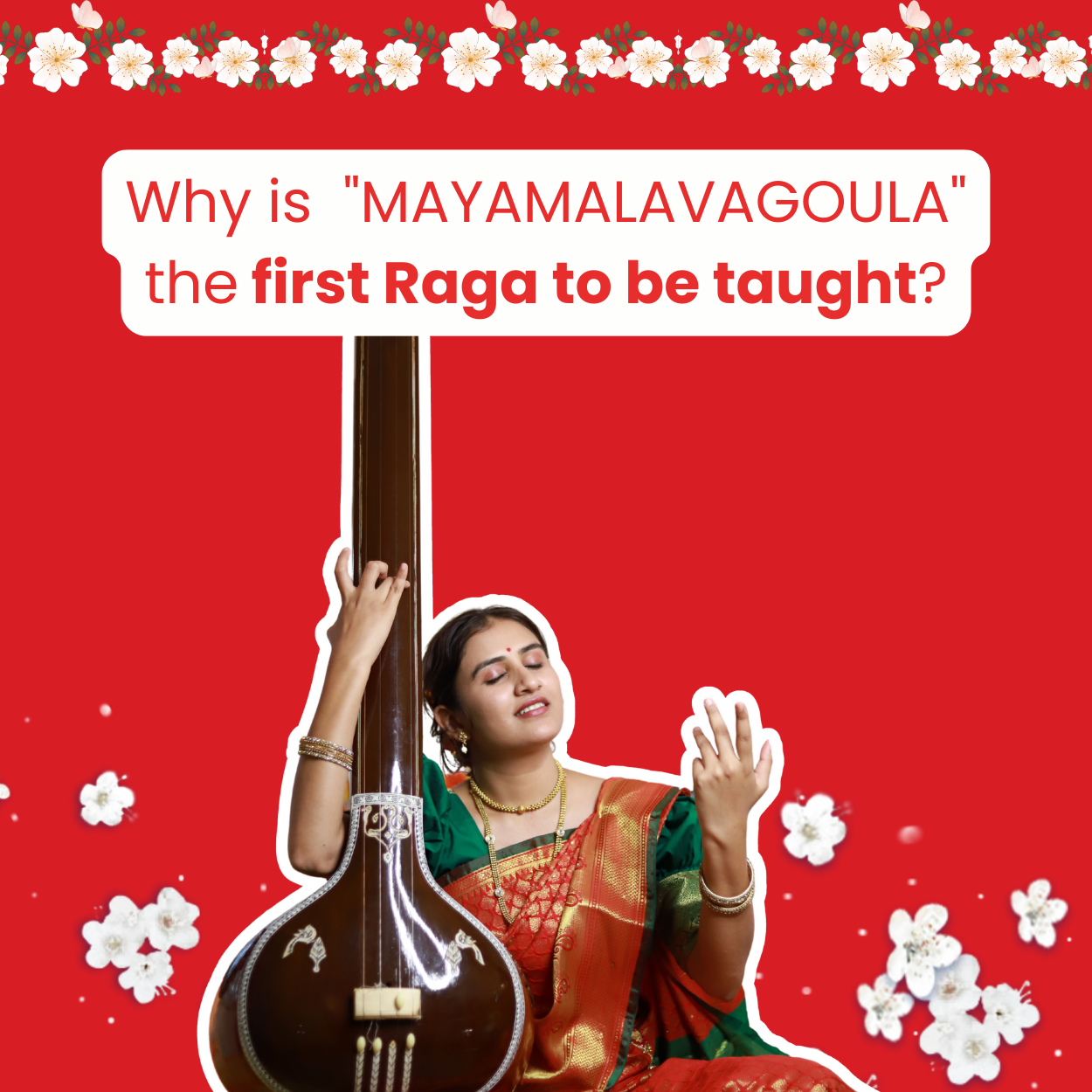
WHY IS "MAYAMALAVAGOULA" THE FIRST RAGA TO BE TAUGHT?


I still remember those school days.
Every time I sang a Carnatic krithi or varnam, my friends would tease me,
“Oh look, she’s singing S R G M P D N S!”
They’d mimic the swaras and laugh. But here’s something most of us forget , the most commonly heard S R G M P D N S actually belongs to one of the most important ragas for beginners: Mayamalavagoula (or Mayamalavagoulai).
A lot of students ask:
“Why do we always start with Mayamalavagoula? Why not other beautiful ragas like Kalyani or Sankarabharanam?”
There’s a very solid reason, and it’s all hidden inside the structure of Mayamalavagoula itself.
Let’s break it down.
1. It Has All 7 Swaras (Saptaswaras)
The biggest reason: Mayamalavagoula is a Sampoorna raga — it contains all 7 swaras in both its ascending (arohanam) and descending (avarohanam) scales.
That makes it perfect to introduce students to the full range of S R G M P D N S, giving them a strong base to build on.
2. It Has a Symmetrical Swara Pattern
Another cool feature: the swaras are symmetrical, which makes it easier for students to understand pitch and position (also called swarasthanas).
Think of it like this:
- The second half (P D1 N3 S) mirrors the movement of the first half (S R1 G3 M1).
This symmetry helps students visualize and remember the raga structure more easily.

3. It Covers 3 Basic Intervals
Did you know that the 7 basic swaras in Carnatic music are actually spread across 16 positions?
Here’s how they look:

Now, Mayamalavagoula uses these 16 swarasthanas in a way that neatly follows 3 basic intervals, something most other ragas (even Sampoorna ones) don’t do.
Let’s look at the 3 simple intervals:
- 1st Interval:
The distance between S & R1 is repeated in G3 & M1, and again in P & D1.

- 2nd Interval:
The distance between M1 & P is a clear and easy jump.

- 3rd Interval:
This is a slightly wider gap between R1 & G3 and D1 & N3.

These easy-to-follow patterns help beginners understand and internalize pitch spacing early on.
4. It Has Both Low and High Notes
Mayamalavagoula includes extreme swarasthanas , both low and high notes:
- Lowest: R1 and D1
- Highest: G3 and N3
This gives students a solid idea of how swaras are placed across the vocal range, and how to navigate between them.
5. It Sounds Good With or Without Gamakas
Here’s what makes Mayamalavagoula truly beginner-friendly:
It belongs to a special group of ragas called “Swasthaana Vishaddha” ragas.
That means it sounds complete and expressive, even when sung with plain notes (without gamakas).
Compare this with ragas like Kalyani or Sankarabharanam, those need gamakas to bring out their beauty and identity.
But with Mayamalavagoula, even flat/plain notes work beautifully making it much easier for new students to learn and connect with.
So, Why Mayamalavagoula?
Because it’s:
- Structurally clear
- Musically symmetrical
- Pitch-balanced
- Beginner-friendly with or without ornamentation
It gives you everything you need to build a strong foundation in Carnatic music.
And that’s exactly why every beginner starts here.
Watch this video to know more!
🎶 Learn It the Right Way at Spardha
At Spardha, our Carnatic Vocals Course is designed to help you master the basics of Mayamalavagoula step-by-step, with guidance, support, and practical application.
Want to start your Carnatic journey with the right raga?
Join Spardha and discover the magic of Mayamalavagoula.
By
Anagha Murali,
Carnatic Vocals SME